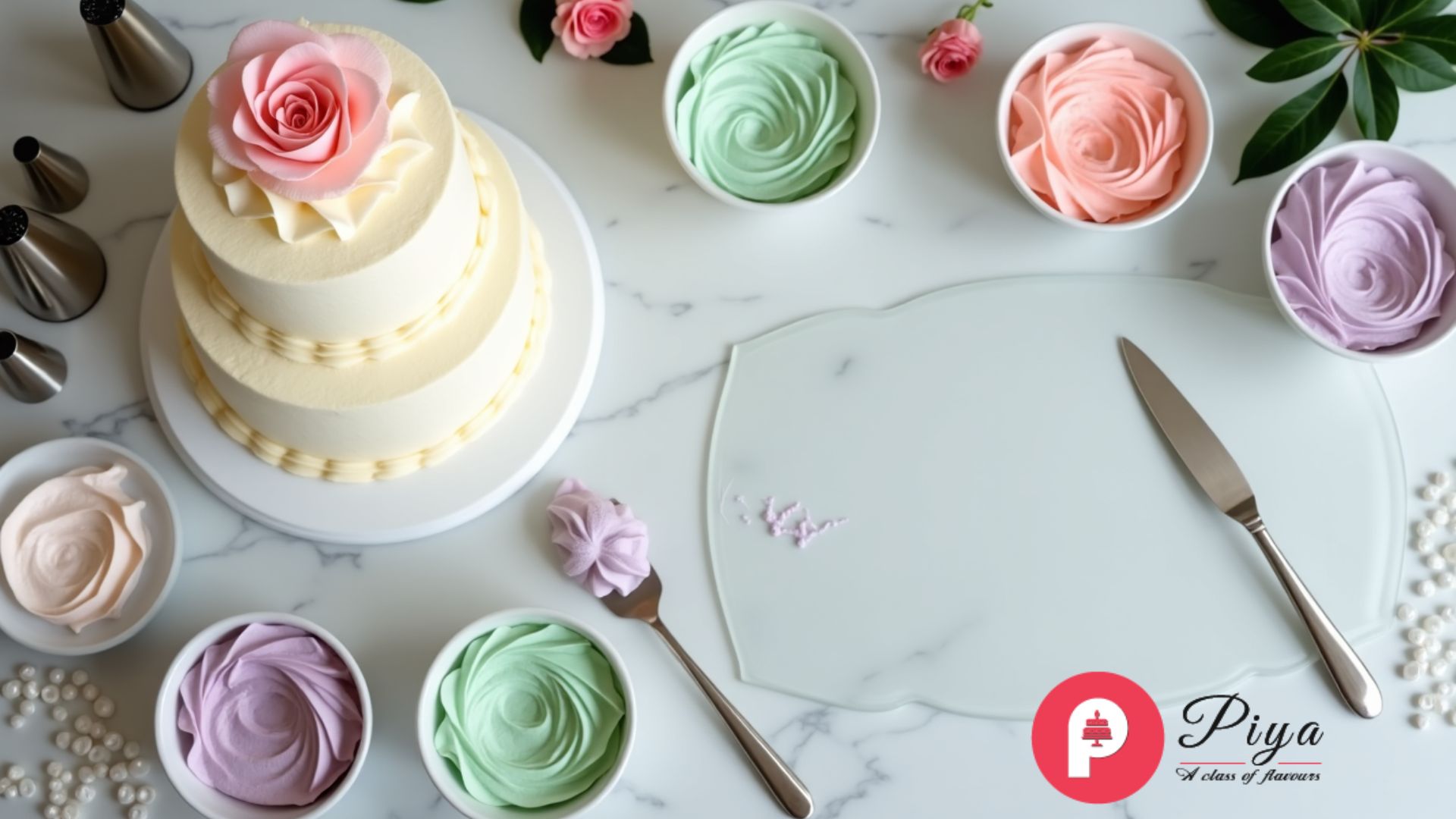You must have experienced that moment hours spent baking a perfect cake, but the final look disappoints because of lumpy, uneven icing.
The struggle feels real. Your frosting turns too runny, too stiff, or fills with air bubbles. Good news awaits though creating professional-looking cake icing doesn’t require complex science. Simple techniques and practical tips can help your homemade cakes look amazing instead of amateur.
A perfect cake needs the right icing for cake. This piece covers everything you need to create flawless cake icing. You’ll learn to choose proper ingredients and become skilled at buttercream frosting that gives your cake that smooth, professional finish.
Ready to enhance your cake decorating skills? Let’s take a closer look.
Understanding Different Types of Cake Icing
Welcome to the wonderful world of cake icings This guide will help you understand the essential types you’ll encounter during your baking trip.
Buttercream serves as the most versatile companion in cake decorating. Its creamy, spreadable texture makes it perfect for both filling and frosting cakes. The rich flavor allows easy piping into beautiful decorations.
Royal icing remains the most traditional choice. This icing creates a pure white finish and dries into a hard, matte shell. Bakers prefer it for intricate designs and detailed piping work.
Here are the key characteristics of different icing types:
- Glace icing: Simple and glossy, made with just icing sugar and water
- Fondant: Flexible sugar dough perfect for smooth, polished finishes
- Swiss meringue buttercream: Silky smooth and stable, ideal for professional decorating
- Cream cheese frosting: Rich and tangy, perfect for carrot cakes and red velvet
Professional cake decorators often choose Swiss or Italian meringue buttercream. These varieties hold their shape well and create stunning piped flowers and borders on celebration cakes.
Each icing type has its specific purpose. Buttercream works best for everyday cupcakes, while royal icing suits detailed cookie decorations. A perfectly smooth wedding cake needs fondant to achieve that flawless finish.
Mastering the Perfect Icing Consistency
The right icing consistency creates professional-looking cakes. Your cake decorating success depends on getting this simple skill right, so let’s become skilled at it together.
Perfect icing requires understanding three main consistencies:
- Thin Consistency: Perfect for smooth coverage and writing messages
- Medium Consistency: Ideal for general frosting and simple piping work
- Stiff Consistency: Essential for creating detailed decorations and flowers
The “spatula test” helps check your icing consistency. Your lifted spatula should create a soft peak with a slight curl at the tip. Add liquid (1 tablespoon at a time) if the peak stands straight up. Add more powdered sugar (¼ cup at a time) if it doesn’t hold shape.
Temperature is a vital factor in getting the consistency right. Room temperature butter should feel soft enough to indent with your finger but firm enough to hold shape. Warmer climates need less liquid, while cooler environments might need more.
Butter quality affects buttercream consistency. High-fat butter needs more liquid to reach the right consistency. Standard store-brand butter needs fewer adjustments.
Pro Tip: Test often while making small adjustments. Thinning out frosting works better than trying to thicken it.
Professional Icing Techniques
You’ve learned the simple techniques, so let’s take a closer look at professional methods that will raise your cake decorating skills. A bakery-worthy finish comes from good preparation and the right tools.
Our professional crumb coating technique involves these steps:
- Start with slightly chilled cake layers
- Apply thin original coat of frosting
- Chill for 15-20 minutes
- Add final coating for smooth finish
- Use bench scraper for perfect sides
Perfect sides need a turntable while you hold the bench scraper at a 45-degree angle. You’ll get the best results by keeping consistent pressure as you rotate the cake.
These professional texturing techniques create amazing results:
- Create elegant grooves using an offset spatula while spinning
- Add visual interest with spiral swirls using a 1M or 2D piping tip
- Press fresh berries or chocolates around the base for instant sophistication
Royal icing consistency is vital to detailed piping work. Intricate lacework patterns need slightly thicker royal icing, and you should practice designs on parchment paper first.
Pro Tip: You can create flawless, professional sides by heating your metal scraper in hot water. Just dry it well and make one final pass around the cake. The warmth helps create that perfect finish.
A professional look comes from building layers patiently. Take your time with each step rather than trying to achieve perfection in one go.
Conclusion
Professional-looking cake icing needs a good grasp of frosting types, consistent texture, and proper techniques. You’ll find everything from simple buttercream to advanced royal icing here, which helps you pick the perfect option that matches your cake decorating needs.
Cake icing excellence comes through practice and patience. Your results will improve when you start with the right consistency, apply a crumb coat, and use professional tools like bench scrapers and turntables. Professional bakers build their skills one cake at a time.
Each cake gives you a chance to polish your techniques and experiment with new designs. These tips and techniques will help you create beautifully decorated cakes that look and taste amazing. Regular practice with these methods will soon have you making professional cakes that amaze your family and friends.

